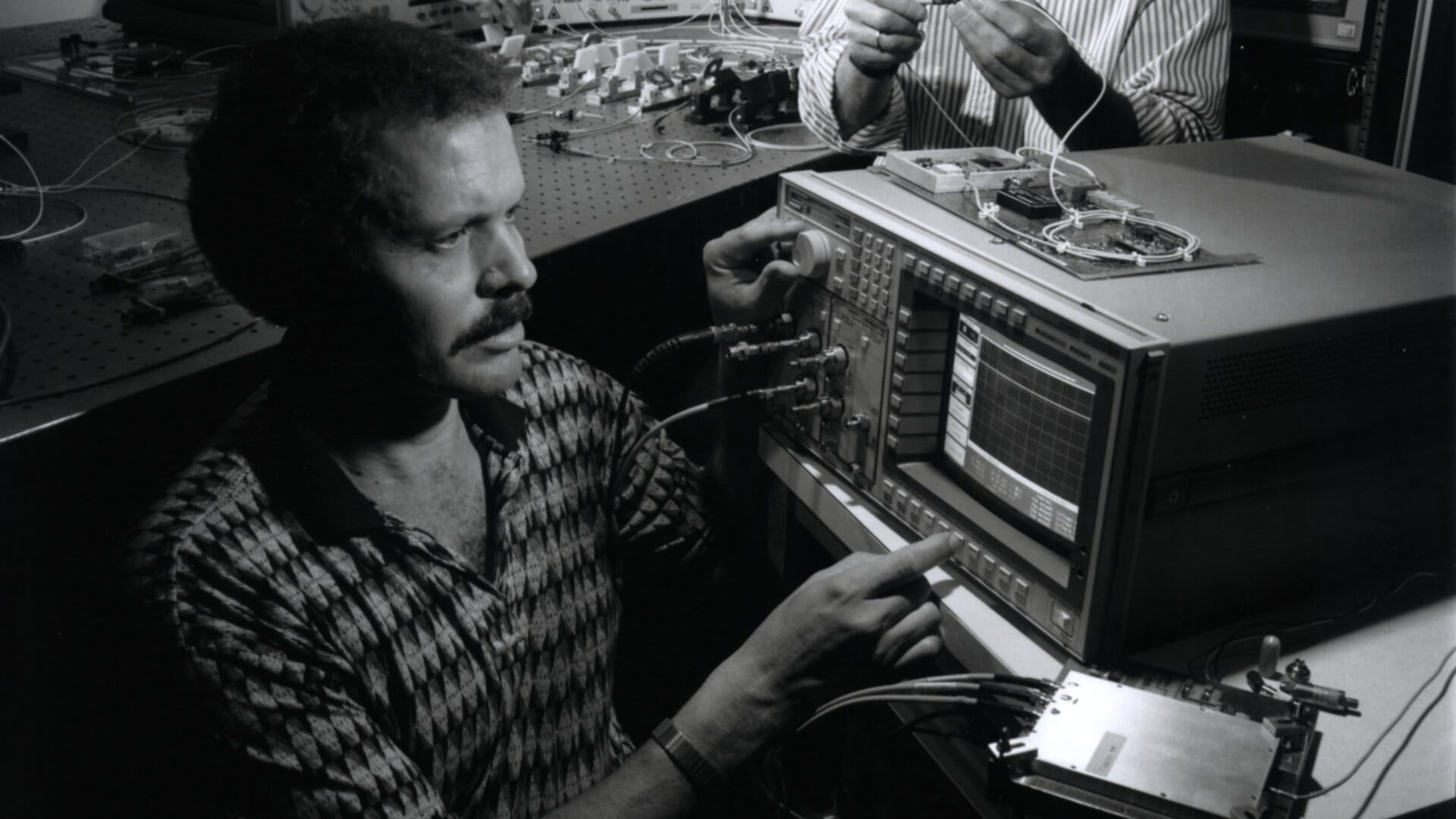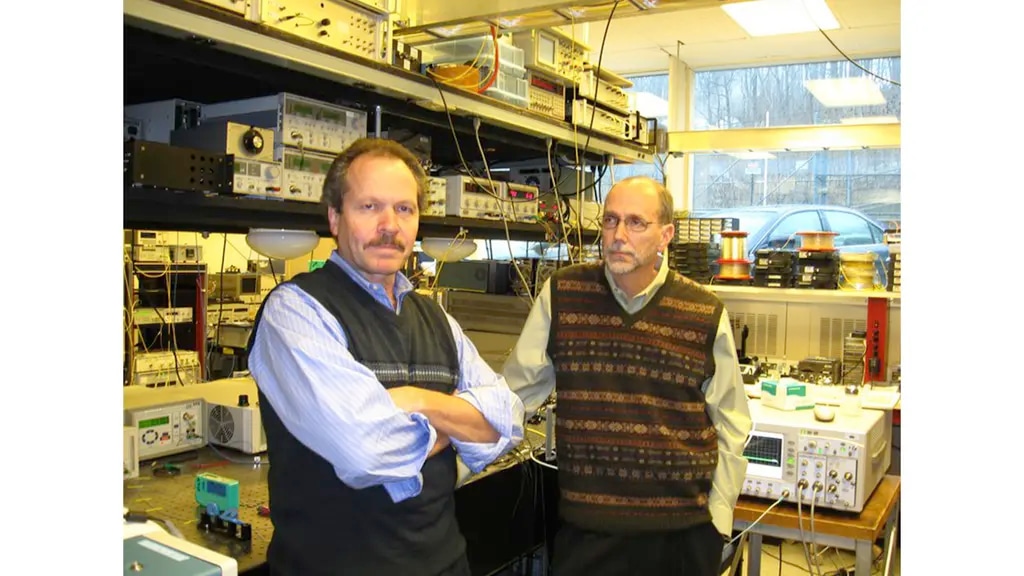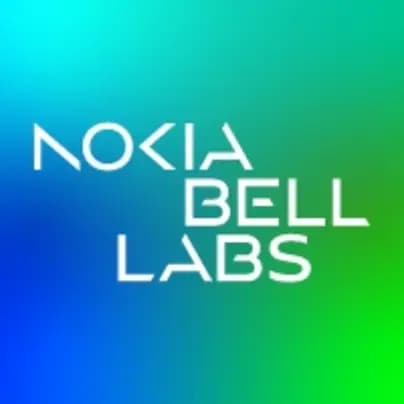Turning garbage into gold: Andy Chraplyvy and the discovery of TrueWave fiber

“It was like falling off a log.” This was the surprising way Andy Chraplyvy described one of the most significant optical discoveries ever made at Nokia Bell Labs. Part of today’s Nokia Bell Labs leadership team, Chraplyvy is the co-inventor of TrueWave fiber or non-zero dispersion-shifted fiber (NZDF), and his pioneering research into optical fiber non-linearities and their dispersion management was critical to the industry’s ability to make wave-division multiplexing (WDM) feasible. He has numerous awards and industry recognitions, and yet, if you ask him about them, he feels that somehow or other he must have pulled the wool over the eyes of the judges on the awards committees. “I always say” he admitted, “it’s better to be lucky than good.”
This piqued my interest: Does Chraplyvy really not see the importance of his breakthrough contributions to the field of optics research? As he went a little deeper into his story, the answer that emerged was a mixture of the sometimes haphazard way invention works, Chraplyvy’s natural modesty and the special environment at Bell Labs itself, where invention has occurred so often.
By his own account, what led to NZDF’s discovery were very small and completely routine errors in the manufacturing of optical fiber by the AT&T optical fiber factory in Atlanta (now OFS). It turned out that some of the just-out-of-spec fiber, which would normally have been discarded, turned out to have exactly the right properties to make WDM possible. “We were just lucky,” he said.
Why Chraplyvy and Bob Tkach, his long-time Bell Labs colleague and collaborator, were looking at the just-out-of-spec fiber in the first place reveals the part of the story that has more to do with years of obsession, hard work and the magic of Bell Labs, which allows researchers like Chraplyvy to follow their hunches.

Lasers and non-linearities
Chraplyvy’s interest in non-linearities began during his doctoral work at Cornell. There they had replicated an infrared molecular laser (just recently invented at the Bell Labs Holmdel lab) that required a carbon dioxide laser pump. In the ensuing years, using the carbon dioxide laser, they discovered a new type of optical nonlinearity in doped crystals that turned out to be quite interesting and perplexing. This work was what led to his doctorate dissertation and Chraplyvy’s life-long fascination with optical non-linearities.
Upon graduating from Cornell, he took a small detour through the Physics Department of General Motors Research Laboratories. Environmental regulation of tail pipe emissions was forcing car manufacturers to develop new technologies such as catalytic converters. GM was using lead-salt tunable semiconductor lasers that it made in-house to do gas spectroscopy. They were analyzing in real-time the gases that were exiting the engine, comparing them against the gases exiting the catalytic converter. These tunable lead-salt lasers were just what were needed to explore the non-linearities that Chraplyvy was so interested in. So, he married the carbon-dioxide lasers from Cornell and the lead-salt lasers from GM to get the best of both technologies.
Then his dream job came calling in the form of the Bell Labs recruiter he had gotten to know while at Cornell. In 1980, he joined Tingye Li’s optical team at Bell Labs and carried on his fascination with lasers and non-linearities in the study of optical fibers. One of the great strengths of Bell Labs is the wealth of experience and knowledge that a young scientist encounters on the first day at Bell Labs. A particularly important mentor for Chraplyvy was renowned scientist Roger Stolen, often referred to as the “father of nonlinear optical fiber physics.” Stolen gave generously of his time to explain the nuances of optical non-linearities in fibers to Chraplyvy.
At Cornell, where Chraplyvy was studying non-linearities in very small crystals, the lasers needed to be hugely powerful to generate the non-linearities in a small region (focal length) of space. At Bell Labs the optical fibers were so long that low-powered lasers could do the same work. This meant a lot more freedom for Chraplyvy’s explorations.
For the next decade, Chraplyvy and Tkach explored optical fibers and how their non-linearities might affect optical communications systems. For a company like AT&T that was in the business of moving communications over very long distances, and for which optical fiber was the new, promising medium, it was important to explore and understand its behavior in different conditions. Looking always for ways to enable it to carry signals farther and faster, over the next decade, Bell Labs led many of the discoveries in the optics field, driven always by the world’s insatiable demand for bandwidth. Chraplyvy’s and Tkach’s work with non-linearities would prove to be critical to one of the Labs’ biggest breakthroughs, the use of WDM.
WDM and the search for a new kind of optical fiber
During the 1980s, the big push was to bundle multiple wavelengths over optical fiber. WDM uses a single optical fiber to carry multiple channels, all at different wavelengths, which in layman’s terms we think of as colors. Before WDM, an optical fiber would only carry one color of light at one wavelength. But what if you could carry multiple colors or wavelengths? Instead of only sending 1 Gbps on a single channel, if you had 40 colors, you could send 40 Gbps, for a 40x capacity improvement. That was a major goal of the optical research at the time.
In order to achieve this, however, the optical fiber needed to be able to do two different and – at that time – contrary things. It needed to be able to carry signals at high-speed while simultaneously carrying many signals at once. At that time there were two commercially available fibers. One could carry many low-speed channels, the other could carry a single, or just a few, very high-speed channels. There was no fiber that could do both.
The key to the solution was understanding the way light behaved in glass. In their decade of researching non-linearities in optical fibers, Chraplyvy and Tkach had come to have a thorough understanding of light waves’ behavior in glass and, especially important, the many uncanny ways in which that behavior would change depending on the characteristics of the glass.
Chraplyvy and Tkach were convinced that there was a solution, but the current specifications for optical fiber had to be changed, they guessed, only slightly. This led them to the optical fiber discard pile where there were spools of out-of-spec fibers. Perhaps, they reasoned, by chance some of that out-of-spec fiber, although considered useless according to the specifications, might just be the kind of glass that would make multiple, high-speed signals possible.
As luck would have it, the team found it. That is the moment he compares to falling off a log: “We went through this collection of dispersion fibers and found several spools that were out of spec, so the dispersion wasn’t zero. It was just +2 ps or -2 ps, eventually what the TrueWave specs would be. The fact that TrueWave could come in a “positive” version and a “negative” version would lead to an even more important discovery, namely dispersion management, a concept that has been used in lightwave systems worldwide for decades. We knew what we were looking for, so we put it in our setup to measure the non-linearities and, sure enough, there were no non-linearities, and yet you could transmit really high-speed signals. So, basically, TrueWave fiber was discovered by examining out-of-spec dispersion-shifted fibers.”
That was Chraplyvy’s so-called lucky breakthrough, but of course, there is the telling phrase in his account, “we knew what we were looking for.” This wasn’t entirely by chance, but design. Bell Labs had created an environment in which its researchers could explore their subjects in such depth that they would be able to recognize breakthroughs, even when they occurred somewhat randomly.
Unlike some inventions that take years to see practical implementation, the practical results were almost instantaneous because they were based on optical fiber the factory was already making. He remembers: “Atlanta could diddle their specs just a little bit and change dispersion-shifted fiber lines into TrueWave lines. And they were able to do that overnight. The product announcement and patent were issued the same week, barely a year after we announced its discovery to the rest of AT&T.”
Chraplyvy has spent his entire career at Bell Labs working on non-linearities in optical fibers and the different things that can be done with lasers. When asked about the future of this kind of work, he doesn’t see any revolutions coming in the understanding of the non-linear behavior of conventional silica-based fibers. He figures that the terrain has been studied intensively and the non-linearity story has stabilized. Plus, new designs for optical fiber, such as hollow core fibers, may entirely eliminate the issue of non-linearities. He immediately catches himself, though, recognizing the irony of his own history: “You never know when a breakthrough may be right around the corner” — or on a spool of out-of-spec fibers being ignored by everyone else.
Chraplyvy understands very clearly that his luck was as much about landing his dream job at Bell Labs as anything else. Thus, he wants to make sure the resources are available so today’s young researchers have the same opportunities, ensuring Nokia Bell Labs will continue to attract the top talent from around the world. He won’t name names, but he sees a group of young up-and-coming superstars that will also be world-renowned for their work in time. He is content to know that he is helping to pass on to them some guidance and wisdom, as well as the same good fortune he enjoyed in his own research career.
The picture within the text: Andy Chraplyvy (left) and Bob Tkach
Written by Richard Hamilton
